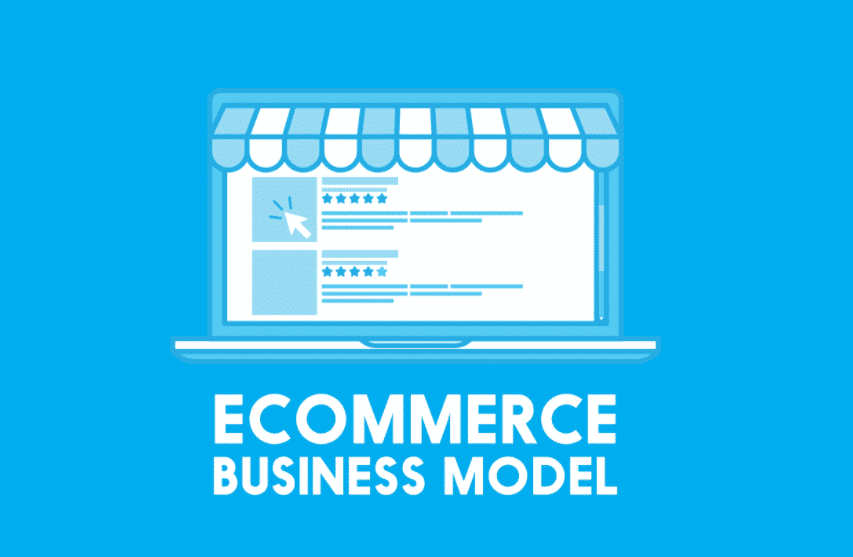Learn the types of eCommerce business revenue models to win the market battle.
Recent studies show that there is a massive transformation is undergoing in the eCommerce industry. Globally, it will reach about 20% through 2022 and reach $5.8 trillion. What does this mean?
Ecommerce is gaining solid acclamation in the online retail world. Every business seeks to find and choose different kinds of eCommerce models that fit their business to grow efficiently in upcoming years.

So, what kind of eCommerce business models make sense?
In general, there are two broad kinds of eCommerce business models – B2B & B2C.
However, the so-called eCommerce business models can be categorized on the type of revenue generation process.
Top-rated Ecommerce Revenue Models In 2022
Let’s take a deep look at each of the ecommerce business revenue models to win customers and return to the market.

Business Inventory Models
Any eCommerce inventory models work on how the businesses handle their inventories; three types of models exist in today’s business environment:
- Drop-Shipping
- Wholesaling and Warehousing
- White-labeling and private-labeling
Drop-shipping
Drop-shipping means selling products that are shipped to the customer directly from the manufacturer, distributor, or supplier, whereas the seller doesn’t keep the stock.
The buyer purchases a product from your online store at the regular retail price; then, the supplier gets a notification regarding the order. With them, you will pay the cost of the orders n wholesale.
Soon after supplier the order, they pack and ship the product directly to the customer under the brand or business name while earning the profit margin.
In the drop-shipping model, you don’t have to buy and keep in stock the bulk; instead, you directly invest a ton of money. So if you want to upscale your business, you need to provide excellent customer service, then your supplier or previous member has to be in the place that can trust you and share your values.
Get built your eCommerce solution that makes tons of revenue!!!
White-labeling and private labeling
For any beginner, white-labeling is one of the most accessible revenue models that doesn’t incur a considerable investment.
White label is the best way to succeed in your distribution, and it becomes a most acquired business plan. Here you’ll create a product, and other merchants will sell it in addition to other features in it.
YouTube is a simple example of a white labeling business using their service if you post a video on YouTube. Here they’ll white-labeled your product and post your video on their video platform with added points.
In private labeling, the start-up cost is meager because it doesn’t need any own factory equipment, and if you find any issue in quality or production, you can simply switch to the new manufacture.
Types of Ecommerce Revenue Models
Almost all eCommerce companies generate revenue from direct sales of their products. But apart from this, what are the other business models that bring you profit?
Here are the top three business models to show you in detail:
- Advertising model
- Transaction fee model
- Subscription model
Advertising model
The advertising model is constantly evolving over a period and is used by most websites to increase their revenue.
As an eCommerce website owner, you can allow paid advertisement for other brands and products directly on your website. The advertiser pays for an ad according to the traffic your website produces.
Website owners needed to attract more visitors if they want to have advertisers on their site. So, it’s only possible when a particular website has a high number of visitors or when you have a solid user base.
Get built your eCommerce solution that makes tons of revenue!!!
Transaction fee model
The transactional fee model comes jointly under the commission-based service where the eCommerce site’s owner or admin will earn a certain amount in the name of transaction fee for enabling transaction services that are done through them.
Here both the buyer and vendor parties are considered the customers as seller/vendor use the third-party services to serve their buyers.
Sellers pay some fixed fees to the service provider for each transaction carried out on the platform. Hence, both the buyer and seller need to register to ensure credibility to check if they are valid customers.
Popular marketplaces like eBay or Amazon & eBay are the best example of a transaction fee model. Here the seller or vendor needs to pay a transaction fee for each successful sale of their product.
Subscription model
Companies that offer subscription models deliver the customer’s products and services and charge them a fee for constant intervals. It’s a peculiar kind of model that primarily focuses on customer retention over acquisition.
In a subscription revenue model, every customer pays multiple payments to access the goods and services. In eCommerce, both the vendors and buyers are the subscribers.
As a vendor, one can use the eCommerce platform as a premium functionality to sell products. Unlike a vendor, one can join the community to access all those exclusive products from your eCommerce while receiving a ponderous cashback for each purchase.
Summing Up
We’ve discussed all the successful prevailing eCommerce business models in detail. All the above information will help you go through the sales-boosting process and establishing a robust eCommerce business.
Hence, the eCommerce business models play an essential role in scaling your business; therefore, choose wisely.
What should you have to do then?
Get aid from the best in industry eCommerce website builders to get all your customization work done. Webnexs is a next-gen eCommerce platform with a flexible eCommerce model to meet your unique needs.



